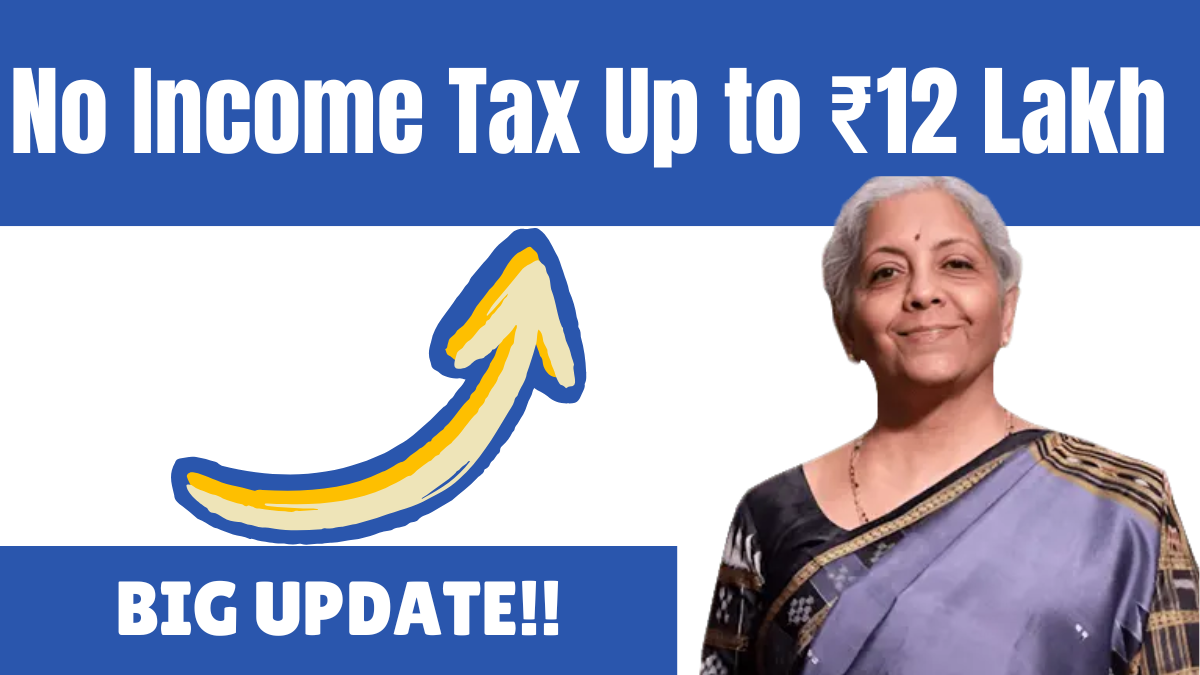
The Budget 2025 introduces bold tax reforms aimed at simplifying the tax system, reducing compliance burdens, and driving economic growth. The government is taking steps towards its vision of Vikasith Bharat (Developed India) by restructuring tax laws to be simpler, clearer, and more taxpayer-friendly. A new Income Tax Bill is in the works to cut legal complexities in half, making tax compliance more efficient and accessible. The focus remains on good governance, reduced litigation, tax certainty, and responsive policymaking, ensuring a more transparent and equitable system for all taxpayers.
Table of Contents
ToggleIncome Tax Reforms: Major Benefits for Taxpayers
A significant highlight of Budget 2025 is the new income tax structure, which eliminates tax for individuals earning up to ₹12 lakh per year. For salaried individuals, with the inclusion of a ₹75,000 standard deduction, this threshold extends to ₹12.75 lakh, ensuring higher disposable income and increased savings for millions of taxpayers.
The revised tax slabs aim to make taxation more progressive, providing relief to middle-income earners while maintaining fiscal responsibility.
| Annual Income | New Tax Rate |
|---|---|
| ₹0 – ₹4 Lakh | 0% |
| ₹4 – ₹8 Lakh | 5% |
| ₹8 – ₹12 Lakh | 10% |
| ₹12 – ₹16 Lakh | 15% |
| ₹16 – ₹20 Lakh | 20% |
| ₹20 – ₹24 Lakh | 25% |
| Above ₹24 Lakh | 30% |
The introduction of tax rebates for income up to ₹12 lakh ensures that individuals within this bracket effectively pay zero tax. Taxpayers in other brackets will also benefit from reduced liabilities. The new structure leads to ₹80,000 in tax savings for those earning ₹12 lakh, ₹70,000 for those earning ₹18 lakh, and ₹1,10,000 for those earning ₹25 lakh, making this one of the most taxpayer-friendly budgets in recent years.
With these reforms, the government is prepared to forgo ₹1 lakh crore in direct tax revenue and ₹2,600 crore in indirect tax revenue, reflecting its commitment to supporting households, increasing consumption, and encouraging investment.
TDS and TCS Reforms for Simplification
Several changes have been proposed to simplify Tax Deducted at Source (TDS) and Tax Collected at Source (TCS) regulations. The number of TDS rates and thresholds will be reduced for greater efficiency and ease of compliance.
- The senior citizens’ interest deduction limit has been increased from ₹50,000 to ₹1 lakh.
- The TDS threshold for rent payments has been raised from ₹2.4 lakh to ₹6 lakh per year, providing relief to landlords.
- The TCS threshold for foreign remittances under RBI’s Liberalized Remittance Scheme (LRS) has been increased from ₹7 lakh to ₹10 lakh, reducing the tax burden on overseas transactions.
- TCS exemptions have been granted for educational remittances funded by loans from specified financial institutions.
- Higher TDS provisions will apply only to individuals who do not have a PAN, ensuring compliance without affecting taxpayers who follow the regulations.
Encouraging Voluntary Compliance & Reducing Litigation
The updated return filing period has been extended from 2 years to 4 years, encouraging more taxpayers to voluntarily update their tax filings without fear of excessive penalties. The government has noted a massive success in voluntary compliance, with 90 lakh taxpayers updating their income details under the scheme introduced in 2022.
To reduce tax disputes, the Vivaat Se Vishwaas scheme has already helped 33,000 taxpayers settle pending cases, saving time and legal expenses. The government is also implementing paperless digital processes for tax orders and appeals, ensuring faster resolution of cases and better transparency in tax administration.
Tax Relief for Charitable Trusts, Real Estate, and Senior Citizens
The Budget introduces several reforms benefiting charitable trusts, property owners, and retirees.
- The registration period for small charitable trusts has been extended from 5 years to 10 years, reducing administrative burdens.
- Provisions to prevent disproportionate penalties for minor compliance errors have been introduced, ensuring fairness in the tax system.
- Taxpayers can now claim benefits on two self-occupied properties without additional conditions, providing greater flexibility for homeowners.
- A 3-year block scheme for transfer pricing in international transactions has been introduced, providing stability for multinational corporations.
- Exemptions for withdrawals from National Savings Scheme (NSS) accounts will be granted for accounts with no interest accrual after August 29, 2024. Similar benefits have been extended to NPS (Vatsanya) accounts.
Investment & Employment Promotion Measures
To attract foreign investments and boost domestic job creation, the Budget includes several incentives for businesses and startups.
- A new presumptive taxation scheme for non-residents providing services to India’s electronics manufacturing industry has been introduced.
- Safe harbor provisions for foreign companies storing components for supply to electronics manufacturers will be implemented, reducing uncertainties in international taxation.
- The tonnage tax scheme has been extended to inland vessels under the Indian Vessels Act 2021, supporting the growth of India’s water transport sector.
- Startup tax benefits have been extended by five more years, allowing companies incorporated before April 1, 2030 to avail incentives.
- The International Financial Services Centre (IFSC) will receive additional tax incentives for ship leasing, insurance operations, and treasury activities, positioning India as a competitive global financial hub.
Final Thoughts
Budget 2025 introduces one of the most significant tax reforms in recent years, delivering substantial benefits for middle-class taxpayers, businesses, senior citizens, and investors. The zero-tax threshold up to ₹12 lakh, simplified tax structure, and investment-friendly policies will help stimulate economic growth, reduce compliance burdens, and improve financial well-being for millions.
With a focus on tax simplification, voluntary compliance, and technology-driven governance, the Budget lays the foundation for a stronger and more resilient Indian economy. These reforms align with the government’s broader vision of Vikasith Bharat (Developed India), ensuring that India continues its progress toward becoming a global economic powerhouse.

